|
|
|
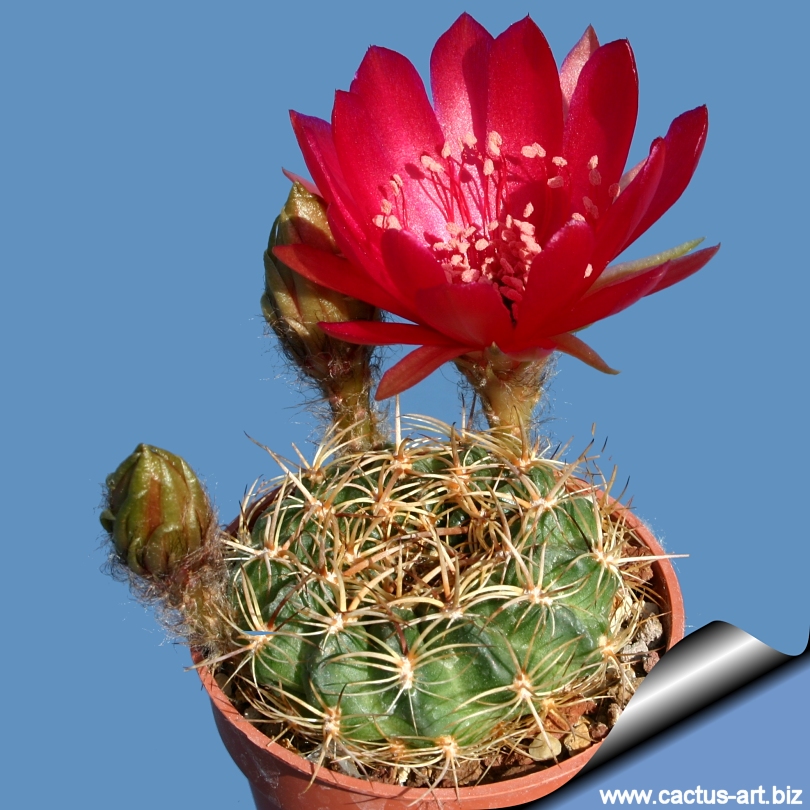
L. draxtleriana
HS50 Aiquile to Mizque km 20, Campero, Cochabamba, Bolivia
Altitude: 2400-2700m
|
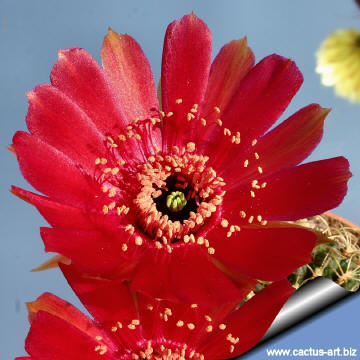 |
 |
|
. |
|
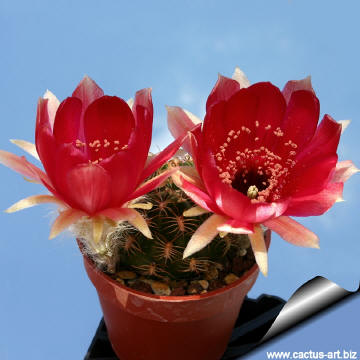 |
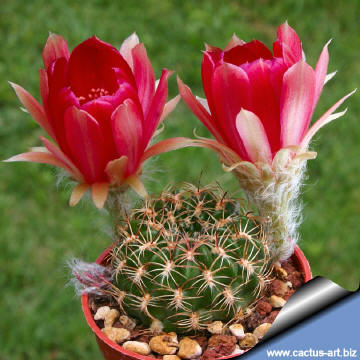 |
|
. |
|
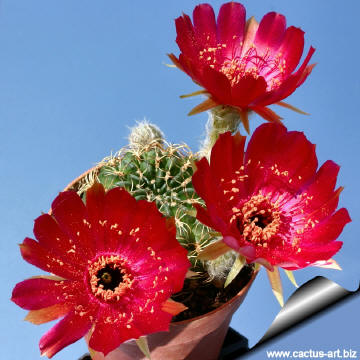 |
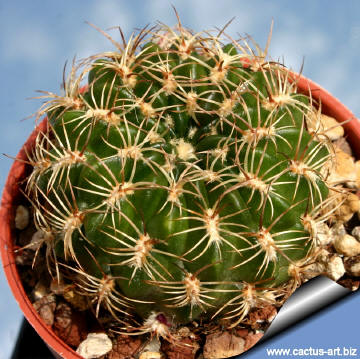 |
|
Advertising
|
|
|
|
|
Family:
Cactaceae
(Cactus
Family) Lobivia draxleriana
Rausch 1971
Accepted
Scientific name: Lobivia
cinnabarina (Hooker) Briton
et Rose, The Cactaceae, 3: 54, 1922
Subfamily: Cactoideae
Tribe: Trichocereeae
Origin: Higher
Andes of Southern Bolivia and Northern Argentina (2000 to 4000 m of
altitude)
Conservation status: Listed in
CITES appendix 2.
This taxon has lots of synonyms (like most
Lobivia) whit several controversial varieties and subspecies.
Synonyms:
- Echinocactus cinnabarinus
Hooker
In:
Curtis's Bot. Mag. 73:pl. 4326. 1847
- Echinocactus cinnabarinus
spinosior
Salm-dick
In: Cact. Hort. Dick. 1849. 35, 176.
1850
- Echinopsis cinnabarina Labouret
In: Monogra. Cact. 288. 1853
- Echinopsis chereauniana
Schlumberger
In: Rev.
Hort. IV. 5:402. 1856
- Echinopsis cinnabarina spinosior
Rümpler
In: Förster,
Handb. Cact. ed. 2 618. 1885
- Echinocereus cinnabarinus Shumann
In: Engler
and Prantl, Pflanzenfam. 3rd
Edition: 185. 1894
- Lobivia tiegeliana Wessner
1939
- Hymenorebutia tiegeliana (Wessner)
F. Ritter 1980
- Cinnabarinea cinnabarina (Hook.)
Ritter
in: Kakteen in Südamerika, 2: 634, 1980
- Cinnabarinea cinnabarina (Hook.)
Frič
In: Kreuzinger, Verzeichnis 1935, nom. nud.A
|
|
Description: Small cactus with a much
flattened usually solitary body (sometime forms small few branched
clumps).
Stems: Glossy dark
green, spherical broader than high, deprssed and unarmed at apex, up to
15 cm in diameter.
Ribs: It has 20 ribs spirally arranged, irregular and oblique,
with raised to acute tubercles between which the areoles appear.
Areoles: Rounded with short whitish felt.
Radial spines: 8-10, about 1-2 cm long, arranged like little
spiders, more or less curved backward, acicular, slender, brownish, turn
greyish eventually.
Central spines: None or 1 to 3 stouter, somewhat curved.
Flowers: About 4 to 8 cm broad, near the plant apex, rotate-campanulate,
scarlet to deep red. Inner perianth segments dbroad, obtuse, the outer
one greenish or whitish, stamen and stile much shorter than the perianth-segments.
The flower's tube is covered by hairy lanceolate-acute scales with hairy
axils.
|
|
|
|
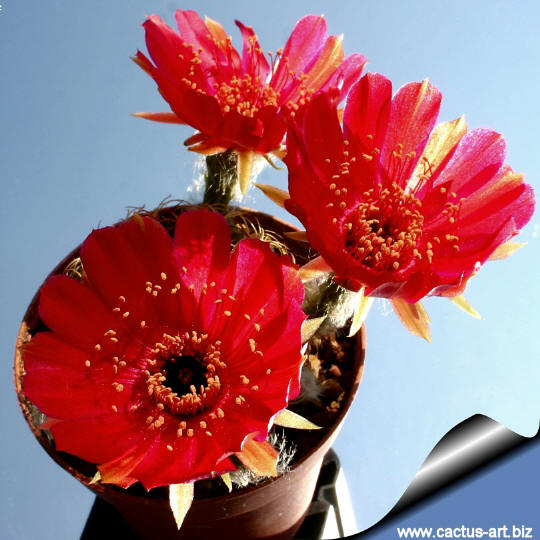
Cultivation: It is a summer
grower species that offers no cultivation
difficulties. Water regularly in summer (but do not overwater )
needs good drainage and very porous, keep rather dry in winter.
Feed with a high
potassium fertilizer in summer.
It is quite frost resistant if kept dry (hardy to -12° C).
Need a bright exposure, full sun
or half shade in summer.
Propagation: Direct sow after
last frost, offsets (if available)
Conspecific taxa, varieties, forms an cultivars:


|
|